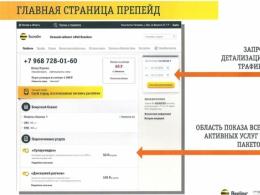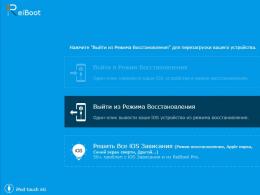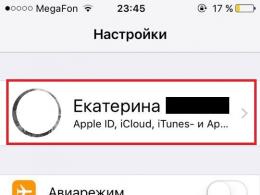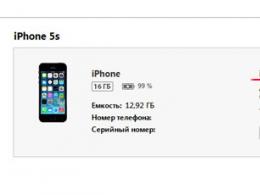Economic Information Systems (EIS). Glossary
Economic information(economic information) - information that reduces uncertainty, lack of knowledge, complementing the understanding of socio-economic processes, both in the sphere of production and in the non-productive sphere at all levels and in all bodies.
Economic information is information about the social processes of production, exchange, distribution, accumulation and consumption of material and other goods. This is the information and knowledge that is extracted from economic data. In other words, data in itself, until it is valuable for solving any problem, is not information.
Economic information reflects the facts of production and economic activity using a system of natural and cost indicators. Economic information, as a rule, is transmitted and processed in the form of signs recorded on various physical media. The set of signs used to exchange economic information in a particular economic system forms the language of economic information.
Economic information should be distinguished from the concept of “economic data,” which is a display of economic phenomena recorded in a specific language on specific material media (indicators recorded in documents, texts or tables), but not related to a specific task or consumer. Economic data only becomes economic information when the information contained in it is used to solve a specific problem and reduces the uncertainty of the conditions of this problem.
Like any information, economic information is studied in three aspects: syntactic; semantic; pragmatic.
Parsing explores the relationships between signs representing economic information, abstracting from their content and value to the recipient. It sets the most important parameters information flows, including quantitative characteristics necessary for selection technical means that collect, register, transfer, store and process economic information.
Semantic analysis examines the content of economic information and methods of its linguistic representation (human language, computer languages), but also does not take into account its value (that is, it actually looks at economic data).
Pragmatic analysis is carried out to determine the usefulness of economic information in the process of its use by the recipient for various purposes and decision-making, that is, it is pragmatic analysis that is used in those conditions when economic data is transformed into economic information.
Each type of analysis has its own quantitative assessments and criteria. The most important for practical application are assessments of the usefulness of economic information, since they make it possible to determine the consumer value of the received information from the point of view of the possibility of its use in the processes of forecasting and economic management.
The value of economic information is determined by such a set of its properties as timeliness, reliability, content, ease of perception, etc.
Economic information has a number of features that facilitate the use of computer analysis methods:
- most are measured in quantitative terms (cost, production volume, profit, etc.);
- the cyclical nature of most production and business processes allows the created program to be reused;
- volume of information flows (detailed information about economic processes makes it possible to apply mathematical models for forecasting and managing them);
- the ability to control the reliability of information (transfer and processing of economic information is carried out only on a legally issued medium - a document with a signature, an electronic message with a code, etc.).
During computer processing, information about each object for an organization in the form of a database is recorded in the form of an economic indicator (the minimum possible semantic unit is called a “requisite”). The props characterize both the qualitative and quantitative properties of the objects being studied. Depending on the purposes of economic analysis, the following classification of economic information is adopted:
- according to the characteristics of the displayed objects;
- by phases of reproduction (information about production, distribution, exchange, consumption);
- by elements (factors) of reproduction (information about means of production, labor resources, natural resources, products and services);
- by industry sector (information about industry, agriculture, trade, construction, etc.);
- by purpose in the management process: managing (communicating decisions to be implemented to executors), informing (implementation feedback in the control system).
Information is divided within these classes:
- on the basis of the management function, the result of which it is (accounting, reporting, planning, forecasting, regulatory, financial, etc.);
- by place of origin (incoming; summary; outgoing);
- by degree of correspondence (reliable, unreliable, timely, untimely, useful, false, redundant);
- in relation to the processing and storage processes (initial (unprocessed), intermediate, result);
- by degree of stability (constant (conditionally constant), variable);
- according to the degree of coverage of data completeness (continuous (complete), selective).
Main directions of research in the field of economic information:
- the most adequate representation of economic objects and processes;
- development of economic and mathematical methods and models for processing economic information;
- creation of an economic information system that meets the needs of modern economic management.
According to its purpose in the process of managing social production, economic information is divided into control and informative (for example, accounting and statistical). Management economic information consists of decisions brought to the attention of executors, either in the form of direct orders, planned targets (i.e. “directive-targeted indicators”), or in the form of economic and moral incentives motivating the behavior of executors (objects of management). Informative economic information(primarily embodied in reporting indicators) performs a feedback function in the economic system: this is information about the results of decisions, the state of the managed object, etc., taking into account which new decisions are made, i.e. further management process is carried out.
Depending on the possibility of using and the value of information for making management decisions, it is divided into useful, redundant and false. Useful economic information characterized by reliability, completeness, timeliness, and accessibility for processing. False economic information occurs when errors occur in the collection, processing and transmission of data. Redundant information- information that is not needed to make a decision. It comes in two types: information that is not related to the content of decisions made, and information received in a volume that is inaccessible for timely processing by the management body.
Based on the degree of processing and place in the information process, economic information can be divided into primary and derivative. Primary economic information- this is like a raw material in the process of processing information: it is obtained through direct observation, recording of ongoing events, i.e. direct collection and perception of data. Derived economic information- a product of one or another processing.
Economic information is also divided into constant, conditionally constant and variable. However, this division is conditional; for example, for enterprises, material consumption standards represent conditionally constant information, but for a higher authority planning production for the future, this is variable information.
The economic information system in the country covers both management information (planning and regulatory) and informative information: operational production accounting, banking information, statistics. Billions of economic indicators circulate in the economy. The task of each management body, any management system, including automated ones, is to extract from these indicators the maximum of useful economic information for decision-making.
It should be noted that in the management of the national economy and its elements (firms), not only economic information is used, but also socio-political, scientific, technical and other types of information.
Economic information
Information that serves the processes of production, distribution, exchange and consumption of material goods and provides solutions to the problems of managing the national economy and its links is called managerial.
Economic information(EI) is a collection of various economic information used for planning, accounting, control, analysis and management of the national economy and its units.
Types of economic information
· by management functions – accounting, planning, statistical, operational management, etc.;
· by place of origin – internal and external;
· by stage of education – primary and secondary;
· by presentation method – digital, alphanumeric, graphic;
· in terms of stability – variable, conditionally constant, constant;
· in completeness – insufficient, sufficient, excessive;
· in truth – reliable, unreliable;
· according to the time period of occurrence – periodic and non-periodic.
Structural units of EI – details, indicators, documents, arrays.
Requisites express certain properties of an object and are divided into attribute attributes and basis attributes.
Props-sign characterizes quality properties of the object (eg, full name of the performer, name of the work).
Props-base gives quantitative characteristic of an object, expressed in certain units of measurement (for example, the number of products in pieces, product price in rubles).
Details have names And values. The range of values is described by the format.
Format defines type and maximum length values. The type can be numeric, character, boolean, and date/time. Certain characters are used to write the format.
For example, in digital format 9 means the position of the decimal digit, A- letters, X– any character, B – binary digit (0 or 1).
Examples of recording formats
The combination of the basis requisites and logically related requisites-features that have economic meaning forms index.
Example indicator
Documents are constructed based on the indicators.
Document– a material object containing information compiled in the prescribed manner and having legal significance in accordance with current legislation.
Economic entities widely use various documents (payment orders, acts, summaries, statements, etc.) to reflect their activities.
A set of documents of the same type, combined according to a certain characteristic, forms array.
Example array - a set of financial reports of enterprises in a certain industry.
Automated Information System (AIS) is a set of information, economic and mathematical methods and models, technical, software, technological tools, as well as specialists, intended for processing information and making management decisions.
The most important element of AIS is Information Support(AND ABOUT). This is information that characterizes the state of the managed object and is the basis for making management decisions. One of the components of the information system is the information base.
Information base includes internal and external information, stored on various media.
Internal – financial and economic state of an economic entity at various time intervals.
External– state of the market and competitors, interest rates and prices, tax policy, etc.
Off-machine organization of economic information
The AIS information base consists of two interconnected parts: out-of-machine and in-machine.
Extramachine – that part of the EI that serves the control system in a form perceived by a person without any technical means.
The off-machine part is represented by various documents. Documents are classified by:
· field of activity– planning, accounting, statistical, banking, financial, accounting, etc.
· in relation to the control object– incoming, outgoing, intermediate, archive;
· purpose– administrative, executive, combined;
· method of use– one-time and cumulative;
· filling method– filled out manually or using technical means.
The document highlights:
· header part, which includes: name of the object, characteristics of the document (index), name of the document, area for affixing codes, permanent attributes;
· design part, which contains signatures persons responsible for the correctness of its preparation, as well as date compilation.
Classification– this is the distribution of a set of objects into subsets in accordance with established signs of similarity or difference.
The sign of similarity or difference that forms the basis of classification is called its basis .
The set of classification rules and the classification result is called classification system .
There are two classification systems - hierarchical and facet.
IN faceted In the system, a given set of objects is divided into groups according to several independent characteristics (facets). Example– classification of industrial products “Footwear”: by material, by quality, by gender and age.
Hierarchical system – when any set of objects is divided into classes, subclasses, groups, etc. sequentially, on mutually subordinate grounds. Example:
Encoding information– this is the formation and assignment of a code designation to an object of classification, a classification sign and (or) a classification grouping.
Codes allow you to: reduce the amount of information entered into the computer; facilitate recording on machine media; search and sort; ensure clarity of output documents.
Codes are classified by:
· presentation form– digital and alphanumeric;
· length– single-valued and multi-valued;
· method of education– ordinal, serial-ordinal, bit, combined.
Ordinal – objects are assigned serial numbers, starting from one.
Serial-ordinal – series of numbers are allocated, and within the series, serial numbers are assigned.
Discharge method– for coding objects defined by several subordinate characteristics. Each classification feature has a certain number of digits, within which coding begins with one.
Example. Create a code for a student who is studying at an institute where: 2 departments (full-time and part-time); 5 faculties; on daytime – 4 courses, part-time – 5; on each course – no more than 6 groups; in groups - no more than 35 students. Then the structure of the student's code is:
The length of the student code is 6 digits.
Codes are assigned according to classifiers. Classifier– a systematized set of names of objects and their code designations. They are divided into national (for example, a classifier of sectors of the national economy), sectoral (for example, a classifier of types of payments in light industry) and local (for example, a classifier of structural divisions of an enterprise).
3. In-machine organization of economic information
In-machine Part information base AIS is stored on computer media in separate unrelated data files or in a single place called database (BD).
File organization of data for processing large amounts of information, often used by many, has a number of shortcomings:
1) high degree of data redundancy in files;
2) tight data coupling and application programs ;
3) there is no possibility of establishing a connection between data different files ;
4) limited data control;
5) insufficient data management capabilities.
Causes, which determined the emergence and rapid development of the database:
· disadvantages of file organization;
· the need to centralize data for the purpose of collective access to it;
· increased requirements for processing speed and data reliability;
· technical progress in hardware.
A database can be generally defined as a set of data organized in a certain way.
Database is a named collection of data that reflects the state of objects, their properties and relationships in some subject area.
Object there may be an object, a substance, an event, a person, a phenomenon, an abstract concept, that is, everything that can be characterized by a set of values of a certain set of attributes.
Attribute– this is an information display of an object’s property. For example, the object “book” is characterized by attributes – “title”, “authors”, “number of pages”, “circulation”, “price”, etc.
Subject area – this is a part of the real world that is described and modeled using a database.
Advantages of the database
1. The database can be considered as object information model, the validity, accuracy and reliability of which largely determine the effectiveness of facility management.
2. In the database information is stored centrally. Many people can be able to access, view and change data at the same time, while enjoying the most latest version information. Easier to change and reconcile data. Disk space is saved.
3. Organizing data in databases gives ability to quickly search, display and analyze data.
The database is new approach to data organization. Maybe accessing data without knowledge physical location them in the computer memory, making data access and processing easier. The development of application programs using databases is becoming easier, faster, and cheaper.
Lecture 5
Listing 5.3.1. A program that implements Kruskal's algorithm
procedure Kruskal (V: SET; E: SET; var T: SET);
(V - set of vertices, E and T - sets of arcs)
ncomp:integer; (current number of components)
edges: PRIORITYQUEUE;
(set of arcs implemented as a priority queue)
components: MFSET;
(set V grouped into a set of components)
u, v: vertex;
nextcomp:integer; (name (number) of the new component)
ucomp, vcomp: integer; (names (numbers) of components)
MAKENULL(edges) ;
ncomp:= number of elements of set V;
for v V do begin (component initialization,
nextcomp:= nextcomp + 1;
INITIAL(nextcomp, v, components)
for e E do (initialize priority queue,
INSERT(e, edges);
while ncomp > 1 do begin (the next edge is considered)
e:= DELETEMIN(edges) ;
let e = (u, v);
ucomp:= FIND(u, components);
vcomp:= FIND(v, components);
if ucorap<>vcomp then begin
(edge e connects two different components)
MERGE(ucomp, vcorap, components);
ncomp:= ncomp - 1;
end; (Kruskal)
The execution time of this program depends on two factors. If in the original graph G Total e edges, then inserting them into the priority queue will require order time. Each iteration of the while loop to find the lowest-cost edge in the edges queue takes on the order of time. Therefore, in the worst case scenario, completing this entire cycle will take time. The second factor that affects program execution time is the total execution time of the MERGE and FIND statements. In any case, Kruskal's algorithm can be executed in time.
Information – information about the world around us
(objects, events, processes) that reduce the degree of uncertainty
Basic properties of information:
Ø Reliability (with a certain degree of tolerance)
Ø Completeness (sufficient for decision making)
Ø Understandability (for perception)
Ø Value (moral, material)
Ø Adequacy (compliance of the created image with the real prototype)
Features of economic information:
Ø Large volumes
Ø Cyclicity
Ø Diversity of sources and consumers
Ø Increase in the share of routine procedures
Ø High degree of responsibility (to owners, creditors, consumers, the state...)
Information system (former definition)
An organizationally ordered set of documents (arrays of documents) and information technologies, including using funds computer technology and communications that implement information processes
(Law “On Information, Informatization and Information Protection” No. 24-FZ)
Information system (new definition)
The totality of information contained in databases and the information technologies and technical means that ensure its processing
(Law “On Information, Information Technologies and Information Protection” No. 149-FZ)
An information system is a set of information, means of collection, transmission, processing and storage together with personnel performing actions with information.
Database
Documentation
Arrays of documents
Information Technology
Staff
The relationship between information, IP and IT
IS Mission
Producing the information needed by the organization to ensure effective management of all its resources
Creation of an information and technical environment for the management of the organization
IS objectives
Ensuring management decisions are made:
provision
Required information
In the right place
At the required time
Scheme of interaction between the external and internal environment
Control functions through the information flow system
A management information system is “a set of information, economic and mathematical methods and models, technical, software, and other technological tools and specialists, designed for processing information and making management decisions.” 2

4 The basic classification characteristics of management information systems are: level in the management system (for example, federal, regional, municipal); area of operation of the management object (economic, social and other areas of operation); types of management processes (technological, economic, personnel, sales processes at the enterprise); degree of automation information processes(from a manual information system to full automation of the management process)



7 System-structural classification. The structure of an information system is a collection of its individual parts, called subsystems. A subsystem is a part, a component of a system, distinguished by some characteristic. All subsystems are usually divided into two large groups: functional subsystems; providing.


Modern system management of an information object is a human-machine complex with the following seven main support subsystems: 1. information; 2. organizational; 3. technical; 4. mathematical; 5. linguistic; 6. software; 7. legal.. 9

Information Support This is the totality unified system classification and coding of information, unified documentation systems; general principles building databases, information and logical database models. Information support is a diagram of information flows circulating both in the organization as a whole and in a specific subject area (sales, personnel, financial, etc.). Information support is implemented in the form file system or in the form of a database. 10




The means of mathematical support include: methods of mathematical statistics; management process modeling tools; typical management tasks (in the areas of finance, accounting, work time balance, etc.); methods mathematical programming, queuing theory, cluster analysis, etc. 14



IS life cycle structure in accordance with international standard ISO/IEC is based on three groups of processes: 1. Basic processes: acquisition, supply, development, operation, maintenance; 2. Supporting processes: documentation, verification, control and quality assurance, etc.; 3. Organizational processes: project management, training, etc. 17

Topic 1.3: System Software
Topic 1.4: Service software and algorithmic basics
Economic informatics and information
1.1. Theoretical foundations of economic informatics
1.1.3. Economic information and information technology
Economic information is a transformed and processed set of information that reflects the state and course of economic processes. Economic information circulates in the economic system and accompanies the processes of production, distribution, exchange and consumption of material goods and services. Economic information should be considered as one of the types of management information.
Economic information can be:
- manager(in the form of direct orders, planned targets, etc.);
- informative(in reporting indicators, performs a feedback function in the economic system).
Information can be considered as a resource similar to material, labor and monetary resources. Information resources are a set of accumulated information recorded on tangible media in any form that ensures its transmission in time and space to solve scientific, production, management and other problems.
Information Technology
Collection, storage, processing, transmission of information in numerical form is carried out using information technology. The peculiarity of information technologies is that in them both the subject and product of labor is information, and the tools of labor are computers and communications.
The main goal of information technology is the production of information necessary for the user as a result of targeted actions for its processing (Fig. 1.).
Rice. 1.
It is known that information technology is a set of methods, production and software-technological tools combined into a technological chain that ensures the collection, storage, processing, output and dissemination of information.
From the point of view of information technology, information requires a material carrier as a source of information, a transmitter, a communication channel, a receiver and a recipient of information.
The message from the source to the recipient is transmitted through communication channels or through the medium (Fig. 2.).
Rice. 2.
Information is a form of communication between managed and control objects in any control system. In accordance with the general theory of control, the control process can be represented as the interaction of two systems - the control and the controlled. The structure of the control system is shown in Figure 3.

Rice. 3.
The enterprise management system operates on the basis of information about the state of the facility, its inputs X (material, labor, financial resources) and outputs Y (finished products, economic and financial results) in accordance with the goal (to ensure the production of the necessary products).
Management is carried out by submitting management influence 1 (production plan) taking into account feedback - current state managed system (production) and external environment (2, 3) - market, higher management bodies.
Purpose control system- to form such influences on the controlled system that would encourage the latter to accept the state determined by the control goal.
In relation to an industrial enterprise, with some degree of convention, we can assume that the goal of management is the implementation of the production program within the framework of technical and economic restrictions; control influences are work plans for the department, feedback data on the progress of production: production and movement of the product, the condition of the equipment, stocks in the warehouse, etc.
Obviously, plans and feedback content are nothing more than information. Therefore, the processes of forming control actions are precisely the processes of transforming economic information. The implementation of these processes constitutes the main content of management services, including economic ones. The following requirements are imposed on economic information: accuracy, reliability, efficiency.
The accuracy of the information ensures its unambiguous perception by all consumers. Reliability determines the permissible level of distortion of both incoming and resulting information, at which the efficiency of the system’s functioning is maintained. Efficiency reflects the relevance of information for the necessary calculations and decision-making in changing conditions.






